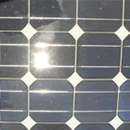|
Building Lighting
Enhancements to building lighting is an area that can yield quick fixes and kick start the development of an energy effificent culture.
-
19% of All Electricity is used for lighting. 24.6% of CO2 emissions are due to electricity generation.
-
The equivalent of 67 power plants throughout the EU are dedicated to providing electricity for lighting!
-
With the consumption of 196 million barrels of oil emitting 59 million tonnes of CO2
Summary.
- Using new technology can bring a £6 per light annual bill down to 25p
- Additional savings can be made through process improvements
- Automation can then make even more savings!
- Need to monitor energy consumption
- Identify responsible staff member, lighting efficeincy to be on JD and personal targets.
Go to Solutions
Reasons to address building lighting:
Legislation:
Waste:
- Financial - spending money lighting empty space
- Energy Efficiency: wasting energy
Contributing to the general and vital decrease in carbon emmissions in the UK.
Business Culture:
A visible improvement to a business process resulting in the saving of money and energy will provide a positive message to staff, customers and suppliers.
A simple step by step guide to fixing the lighting problem, this is largely focused on offices but can equally apply to any commercial building.
Measure your current electrical consumption: This should be fairly straightforward, take a note of electrical consumption over a period of 1 year. You need to compare like for like months - not month on month!
Type of space |
Examples |
| Owned |
Office, workshop, consulting room |
| Shared |
Open plan office, production area, ward |
| Temporarily owned |
Meeting room, ‘hot’ office, classroom |
| Occasionally visited |
Store room, book-stack, toilet |
| Un-owned |
Corridor (open or closed), stairs |
| Managed |
Hotel lounge, museum, foyer, terminal |
|
Start with a simple solution. The easiest place to start is in the smallest rooms. Store rooms and toilets have low occupancy and usually have very simple lighting solutions. Simply replace the switch for a PIR controller that detects whether the room is occupied.
This is the start of any cultural shift in energy management, change has started where workers do not feel any ownership, nobody is changing entrenched ways.
Move on to spaces with limited ownership: Meeting rooms will have usage rules, simply extend them to take into account lighting. Last user must ensure room is clear and lights are off.
Lights can be updated to the latest quality and technology, again without stepping on toes. Also, a simple and relatively small step in that there are few meeting rooms in relation to general office space and it is a continuation of the development of the energy saving culture. Additional changes can be the inclusion of timer switches that ensure lights are off by default during certain periods.
Corridors, stairs and other access routes: You need to consider the Health &Safety implications prior to having lighting controls that might go off while the area is in use.
Personal 'Owned' Office Space: Practically one of the easier areas to work in though care must be taken to keep the 'owner' on-side!
- Opportunity for use of movement and presence sensors,
- manual on and auto-off controls,
- improved lighting technology
- ergonomic lighting to take into account computer screen use, personal preference
Investment in new Technology. The biggest mistake people can make when choosing replacement equipment or initial installation is in looking at the base cost rather than the lifetime cost.
A simple example being the energy saving lightbulb, it costs pounds rather than pennies to purchase, fitting costs are equal but running costs are very different. An energy saving lightbulb rated at 11W will normally give out as much light as a 100W traditional bulb. But we all know that!
Cost comparisons for: Filament / CFL bulb / LED all used for 4 hours per day. Electricity at 12p per unit (CFL = Compact Flourescent Light)
Type of Bulb |
Lifespan in hours |
Initial cost |
Power |
Running Cost
pence/day |
Running Cost per year |
| Filament |
2,000 |
£3.00 |
35W |
1.68 |
6.13p |
| CFL |
8,000 |
£10.00 |
11W |
0.53 |
1.93p |
| LED |
30,000 |
£12.00 |
1.5W |
0.07 |
0.25p |
From the above table, we can see that taking just one year, the total cost of each type of bulb is very similar.
Going forward, not only will the LED bulb will last indefinitely (15 years) but the cost is then 25p per year against the £6 for the filament bulb.
This year on year comparison excludes the cost of replacing bulbs and energy price rises.
Also consider - with a 25p annual cost of LED lights (4 hours per day usage) if PIRs are installed to monitor presence, what cost in electricity is having the PIR permanently on?
Additional Technology, light monitoring and daylight linking allows for the optimum use of daylight, artificial lighting only being used when the required lighting levels in any particular area fall below a set limit.
Solutions - Summary
- Phase out low efficiency lamps and control gear
- Encourage the adoption of high efficiency luminaires
- Encourage the use of lighting controls
- Ensure appropriate lighting levels are used
- Encourage more task lighting with user control
- Make better use of daylighting–treat it as a ‘renewable’
- Stimulate earlier adoption of new technology
- Focus on life-cycle costs rather than initial costs
| The effective operation of lighting systems is dependent on proper commissioning. Commissioning enables the design to be fully realised which, for a good design, will lead to more productive and satisfied occupants and added competitiveness for the building owner. Commissioning of lighting is now an integral part of the requirements for new buildings and major refurbishments under Building Regulations Part L2. |
|
New lighting technology:
- Lamps
- Control Gear
- Lighting Controls
- Solid state lighting (or LEDs)
Considering refering to the CIBSE Commissioning Code L: Lighting when installing office lighting.
True Energy provide consultancy in the design and commissioning of efficient and sustainable corporate lighting systems.
Identify responsibilty to carry out lighting improvements.
A general business statement that lighting inefficiencies will be addressed without carrying through the statement as a practical activity is little more than spin. Experience states that it is necessary to have an individual who has responsibility and ideally bonus associated with promoting and implementing change.
With a large enough organisation, successful change can represent the cost associated with the employment of numbers of employees.
A typical office with 200 members of staff might have in excess of 1,000 discrete light fittings. Taking our cost comparison savings, a simple change to LED lighting using standard fittings might cost £10,000 - I have ignored the labour costs, though changing like for like on failure or routine replacement avoids additional costs and will save in the region of £6,000 per year! Year on year savings accumulate as routine light changing on failure is reduced.
|






